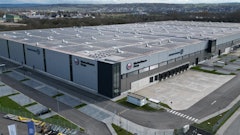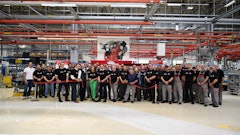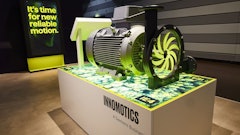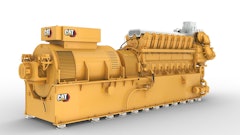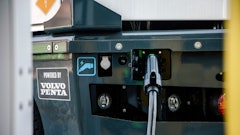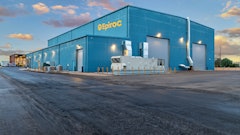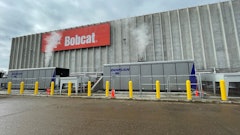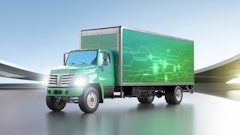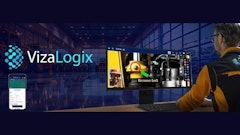
Hydrogen is a key alternative fuel on the path to decarbonization. Governments around the world are backing the renewable hydrogen industry through substantial subsidies as they seek to reach net-zero targets, positioning the industry for significant growth. In the U.S., the Inflation Reduction Act includes incentives with up to $3 per kilogram of production tax credits for green hydrogen production. This is to accelerate the adoption of green hydrogen over the next decade compared to “gray hydrogen,” which is produced mostly via steam methane reforming (SMR).
While hydrogen can be used to support fertilizer manufacturing for agriculture by way of ammonia production and sulfur removal in petroleum refining, its value to a green energy future is its unique energy-carrying abilities. Renewable energy production, such as solar and wind, can be inconsistent due to the energy sources’ intermittent presence and a lack of developed storage infrastructure for them. These factors can cause electric grid instability. With three times the energy content of gasoline, hydrogen can be used to store energy from renewable sources outside the grid and then used as needed.
Companies across the hydrogen value chain are working to make the green hydrogen future a reality, and large-scale projects are underway or being planned throughout the hydrogen value chain. These projects, which will contribute to the greater hydrogen infrastructure, include electrolyzers for producing hydrogen, refueling stations for distributing it and fuel cells for converting it into electricity. With these foundations in place, people can use hydrogen as fuel for stationary power units and hydrogen-powered transportation, as well as for heating and feedstock.
Yet, creating a future where green hydrogen is widespread requires fast scale-up and successful deployment. As it moves throughout the value chain, hydrogen is subject to pressures of up to 15,000 pounds per square inch (psi), or 1000+ bar, and, like many fuels, can be explosive when not handled properly. To achieve a landscape that can effectively and safely meet demand, it is critical that companies identify technologies that can reliably and efficiently control hydrogen fuel, from production through end use. This requires high-pressure solutions across the hydrogen ecosystem.
 In hydrogen fuel cells, several components work together to control hydrogen and ensure fuel is dispensed correctly, including valves and regulators like the ones pictured here.Emerson
In hydrogen fuel cells, several components work together to control hydrogen and ensure fuel is dispensed correctly, including valves and regulators like the ones pictured here.Emerson
Production Through Electrolysis
Green hydrogen is produced through alkaline or polymer electrolyte membrane (PEM) electrolysis, powered by renewable energy. In both processes, an electrolyzer uses an electric current to separate water molecules into their base elements, oxygen and hydrogen. Once it’s isolated, hydrogen can be stored, transported and distributed.
For an electrolyzer to work effectively and safely, the flow of all three fluids, water, hydrogen and oxygen, must be precisely controlled. Reliable valves, back-pressure regulators and an intelligent programmable logic controller (PLC) can provide a high level of media control, preventing leaks and minimizing maintenance time and costs while protecting the plant at large.
In an electrolyzer, there are four layers that work together to efficiently, reliably and safely control media. The first layer is any valve controlling the flow of media — oxygen, water or hydrogen — and includes both back-pressure regulators and pneumatic shut-off valves. The second layer is the actuation layer, which includes valve islands and solenoid pilot valves. Both components have the same function, to actuate the pneumatic shut-off valves that handle the process media. These are the valves that require IP66 protection, while pneumatic valves do not require this rating. The third layer is the PLC, and the fourth is the supervisory control and data acquisition (SCADA) system.
The PLC has the control algorithm and executes the desired logic by sending electric signals to the pilot valves to control the process media. Safety-certified PLCs ensure that a plant undergoes a safe, controlled shut down in case of a hazardous event like a gas leak or fire. Additionally, the SCADA system collects all the plant data and provides operator and engineering displays, trends, analyses, alarms and notifications, thereby providing the ability to control and monitor the plant process via display panels or human-machine interface (HMI).
These four layers form the control ecosystem in a hydrogen electolyzer plant.
Distribution Through Hydrogen Refueling Stations
In hydrogen refueling stations, hydrogen is stored as either compressed gas or liquid in a pressurized tank. When a customer activates the dispenser, fuel is drawn from high-pressure storage to flow through the system and into the lower-pressure vehicle tank. During the fill, the pressure of the hydrogen will be slowly ramped up as the pressure in the vehicle tank increases until it reaches its maximum state of charge (SOC).
To help drivers adopt fuel cell electric vehicles and hydrogen combustion vehicles, it’s critical that hydrogen dispensers are working when drivers need to refuel and fueling times are comparable to gasoline fueling times. However, fuel must be dispensed at a certain amount and rate to prevent vehicle tanks from overheating or overpressurizing. Many devices and components work together to control the flow of hydrogen and help to ensure safe, precise and quick operation when operators arrive at the dispenser.
A regulator equipped with a pneumatic proportional-integral-derivative (PID) controller accurately adjusts hydrogen fuel pressure as it is fed to the vehicle tank during the refueling process. The rate of increasing the dispensing pressure, referred to as the pressure ramp rate (PRR), depends on the type of fueling protocol used by the station. For example, the MC Formula-based fueling protocol from SAE J2601 adjusts the pressure ramp rate based on the live conditions of the system, such as the temperature of the vehicle tank, the buffer tank and the hydrogen flowing through the dispenser.
 Fuel cells can be used for stationary power, serving as a backup energy source, or can power any vehicle that traditionally runs on diesel fuels.Emerson
Fuel cells can be used for stationary power, serving as a backup energy source, or can power any vehicle that traditionally runs on diesel fuels.Emerson
Double-block and bleed valves feature two layers of protection when isolating the process pressure during instrumentation maintenance routines, as well as strong sealing technology that can prevent fuel from leaking into the atmosphere. These are especially important, based on the nature of hydrogen. If hydrogen leaks and encounters an oxidizer and an ignition source, it can combust. Double-block and bleed valves’ dual protection layers help safeguard against this.
A PLC contains the algorithm for controlling the entire process of the fueling station. It takes information about the fueling station, such as the level of fuel in the tank, and executes the necessary commands to fuel the tank to the desired level the vehicle user indicates. It can manage simultaneous filling operations across a fueling station while controlling hydrogen dispensation from the main storage tank and communicating with the master control room via cloud or wired network. The PLC also has the ability to manage inventory levels, hydrogen inventory uptake, billing-related information, generation of daily reports and much more. A safety PLC ensures any hazardous event at a refueling station is safely dealt with.
Conversion for Hydrogen End-Use Applications
Fuel cells create electricity by harnessing the energy released when hydrogen reacts electrochemically with oxygen. They can be used for stationary power to serve as a backup energy source or as power for fuel cell electric vehicles. In these use cases, high-pressure hydrogen storage tanks release hydrogen into the fuel cell system as energy is needed. Hydrogen-powered vehicles can either refuel at refueling stations or have their storage tanks filled and later inserted into stationary power systems.
When designing a fuel cell system, it is important to maximize fuel usage. The hydrogen storage tanks cannot be run to empty due to pressure constraints, so enabling efficient fuel delivery to the fuel cell stack with minimal losses is critical. The system must be able to operate consistently across a range of operating modes — acceleration, deceleration, stopping and idling, which all require varying hydrogen flow demands. This stable system operation is aided through a design employing positive, high-pressure fuel shut-off and is achieved through use of a reliable hydrogen regulator.
Hydrogen regulators with a two-stage tied-valve design can provide steady flow of hydrogen to the fuel cell stack while minimizing the chance of hydrogen fuel leakage, enabling electricity to be effectively generated to power vehicles or stationary power units. The steady fuel delivery can help extend the life of fuel cells by ensuring they have an even amount of hydrogen disbursed across them while in use. For hydrogen-powered vehicles, this allows their drivers to maximize their fuel usage and reduce maintenance frequency.
Taking the Next Steps
The future of green hydrogen depends on the success of each stage of its ecosystem. From production to distribution and conversion, high-pressure solutions can safely, effectively and efficiently control hydrogen and other media as the fuel moves through the value chain. With a high level of control, fuel cell system manufacturers can have the confidence to install and scale up critical infrastructure, and end users can have positive experiences as they adopt new hydrogen technologies. This foundation has the potential to accelerate global green hydrogen use and the transformative future of hydrogen energy.






